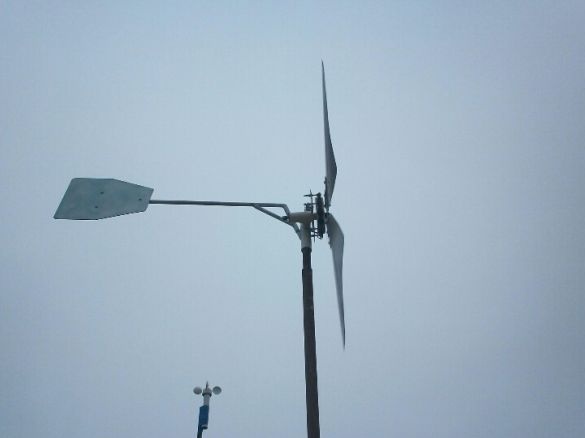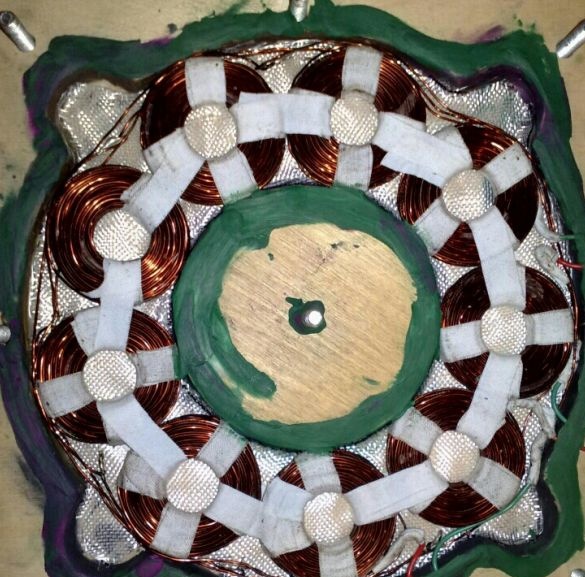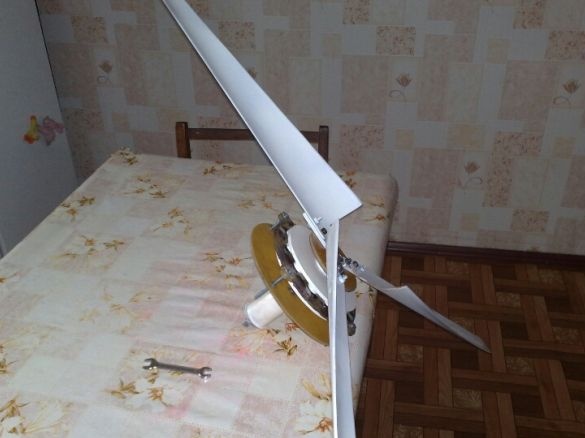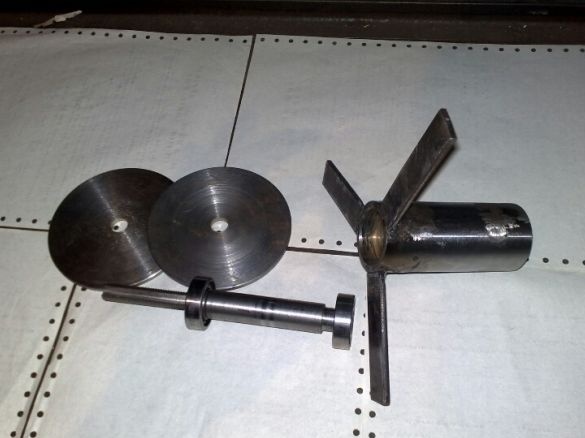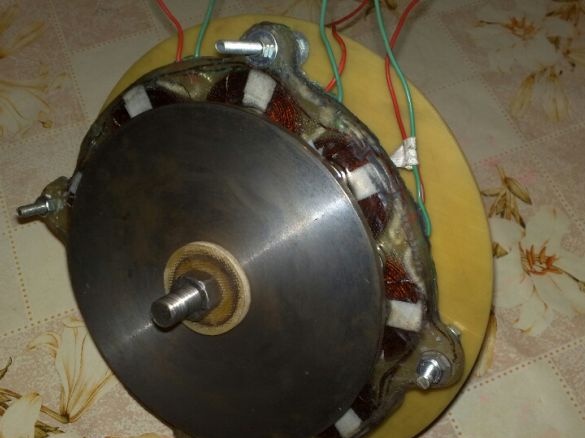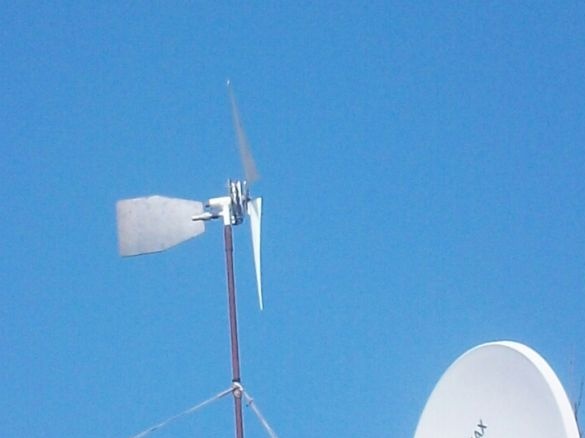The author has long been interested in wind generators and alternative energy, so he decided to try to assemble his own windmill.
To create this windmill, the author needed the following materials:
1) plywood
2) epoxy resin
3) neodymium magnets
4) super glue
5) 0.7 mm wire
6) PVC pipe 110 mm diameter
7) various tools from a jigsaw to a lathe.
8) measuring instruments
Let's consider in more detail the stages of creating this windmill.
To begin with, the author decided to read articles on the Internet aimed at construction windmills themed.
The basis was chosen for the simplest design of a wind turbine on an axial generator with neodymium magnets and a disk starter. Such generators are quite easy to manufacture in comparison with other possible schemes, and also have the advantage of working without sticking.
The author decided to do the tail of his generator with the standard folding function in strong winds, which will protect the windmill by removing the screw from under the wind. For the generator, the author decided to order all the necessary details through online stores. Neodymium magnets were purchased in the amount of 24 pieces, 12 for each of the disks of the future rotor.
The author decided to make a stator in three-phase. For this, coils were wound with a wire 0.7 mm thick. Then the coils were connected in phase, and the author decided to connect the ends of the phases with a star. After assembly, the stator itself was flooded with epoxy.
In order to get the disks for the rotor, the author used the services of a turner who made the necessary parts.
The author decided to fix the magnets with super glue and decided that such a fastener would be quite enough and did not flood with epoxy. After the generator was assembled, the author thought about creating a screw for the windmill. Since this part turned out to be the most difficult and incomprehensible for him, he decided to make the middle version of a PVC pipe with a diameter of 110 mm. In fact, there are a lot of designs of screws for wind generators, and a lot depends on how much this screw will fit the created generator.
Then, the finished generator was installed on a mast about 4 meters high. However, after preliminary tests, the author decided that the wind force at such a height is not enough, it is possible that the screw design flaws affect its operation. But since the author decided to understand the creation of blades and screws later, he simply raised the windmill four meters higher. As a result, a windmill at eight meters in height began to produce the following indicators of electricity. The short-circuit current without load at a wind speed of 5 m / s was about 13V and 1A, with a wind gain of up to 10 m per second, the voltage rose to 20V, and the current strength to 3A, at 15 m / s, the generator produced a voltage of 30V.
However, this did not end there, and with a stronger wind, the screw could not withstand the load and scattered into chips. Therefore, the author had to remove the generator. While the generator was removed, the author decided at the same time to measure its real indicators on the ground, while scrolling the generator to a load of up to 2.1 Ohms, the resistance of each phase is 2 Ohms. The author measured the revolutions using a tachometer. The following measurement results were obtained: 160 rpm was a voltage of 4 V and a current strength of 1.23 A, then 280 rpm turned out to be 6 volts and 2.3 A, 320 rpm 8 V and 3.23 A, 670 rpm 12 V and 5.8 A.
Unfortunately, the author was not able to achieve higher revolutions, since there was no mechanism for the promotion of the generator, all the previous steps were done by hand. But in general, these indicators give an approximate idea of the power of this generator.
Next, the author began to manufacture a new screw. This time, the author decided to make a screw from two blades, since such an option should be more resourceful. A folding tail was also made to remove and protect the propeller from strong winds, so that he would not repeat the fate of his predecessor. Then the entire structure was reinstalled on the mast.
The hub and wheels are machined on the machine. You can also use ready-made hubs, for example automobile (for large generators), or for example a bicycle hub, or something else suitable.
The author made the form for the stator from plywood
The author fixed the stator coils so that they do not move, a circle made of fiberglass is placed at the bottom of the form, it will also be on top, this is for the stator's strength
A ready-made generator, by the way, unlike generators with iron stators, such a generator has no sticking and the screw starts to rotate from almost 2 m / s
The three-blade generator screw, was made "by eye", worked well until it scattered, unable to withstand strong winds
For better wind return, the screw must be specifically designed for the generator, especially high-speed screws
Such windmills like this are made very simply, the author notes, even an unprepared person managed to make a working generator with a power of 20 watts / h in the wind of 10 m / s the first time. Further, the author worked on improving his characteristics.

